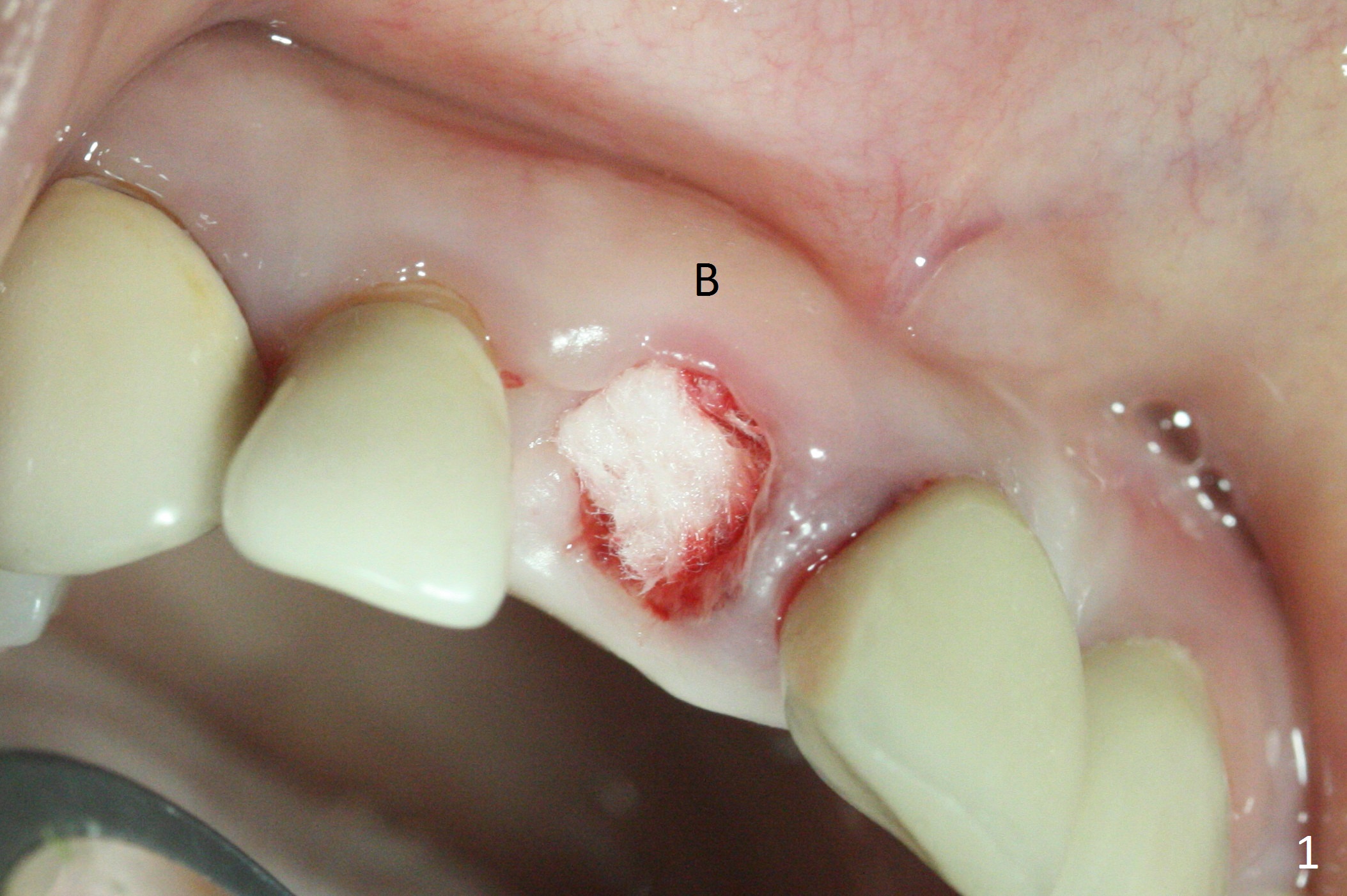
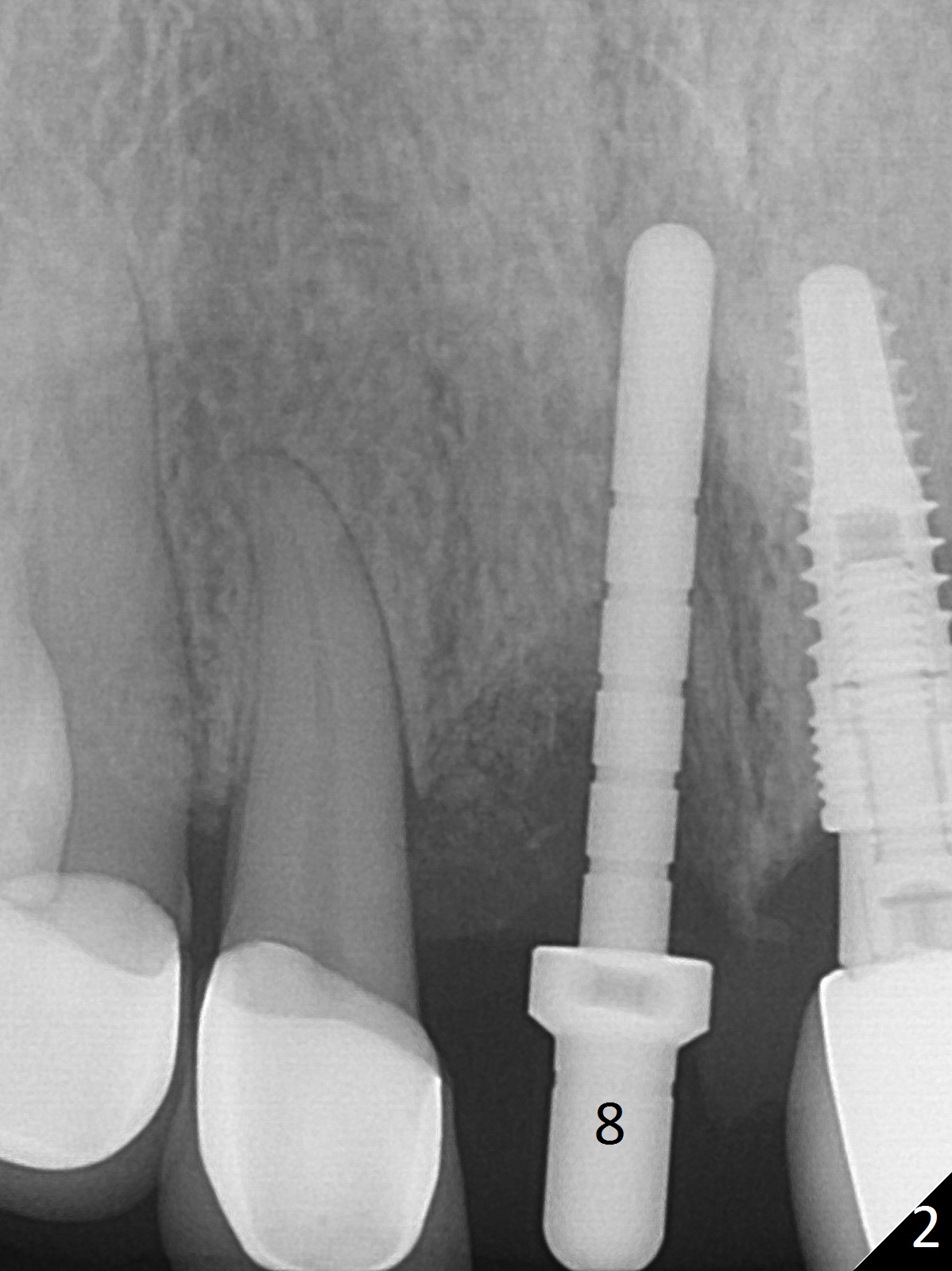
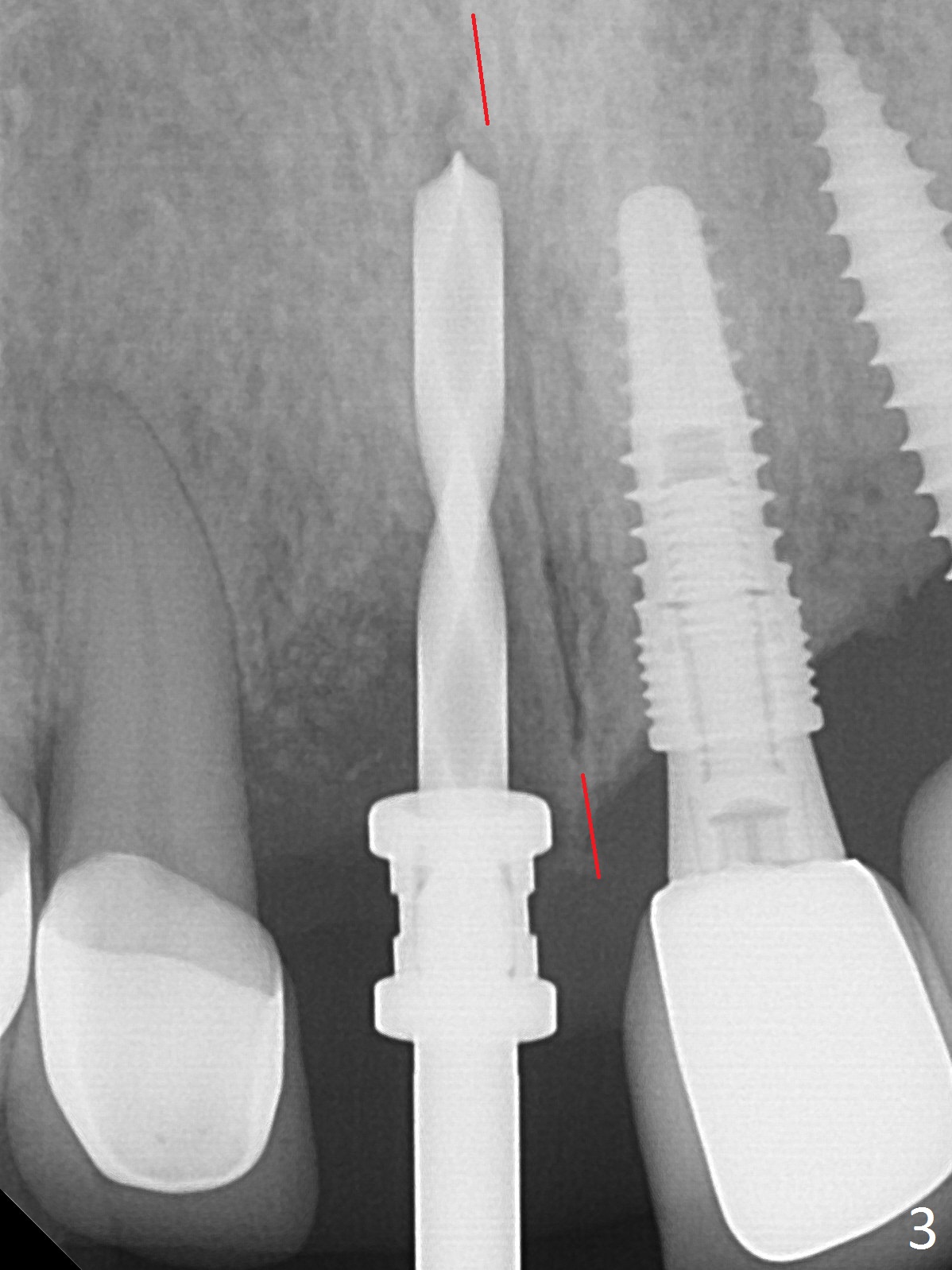
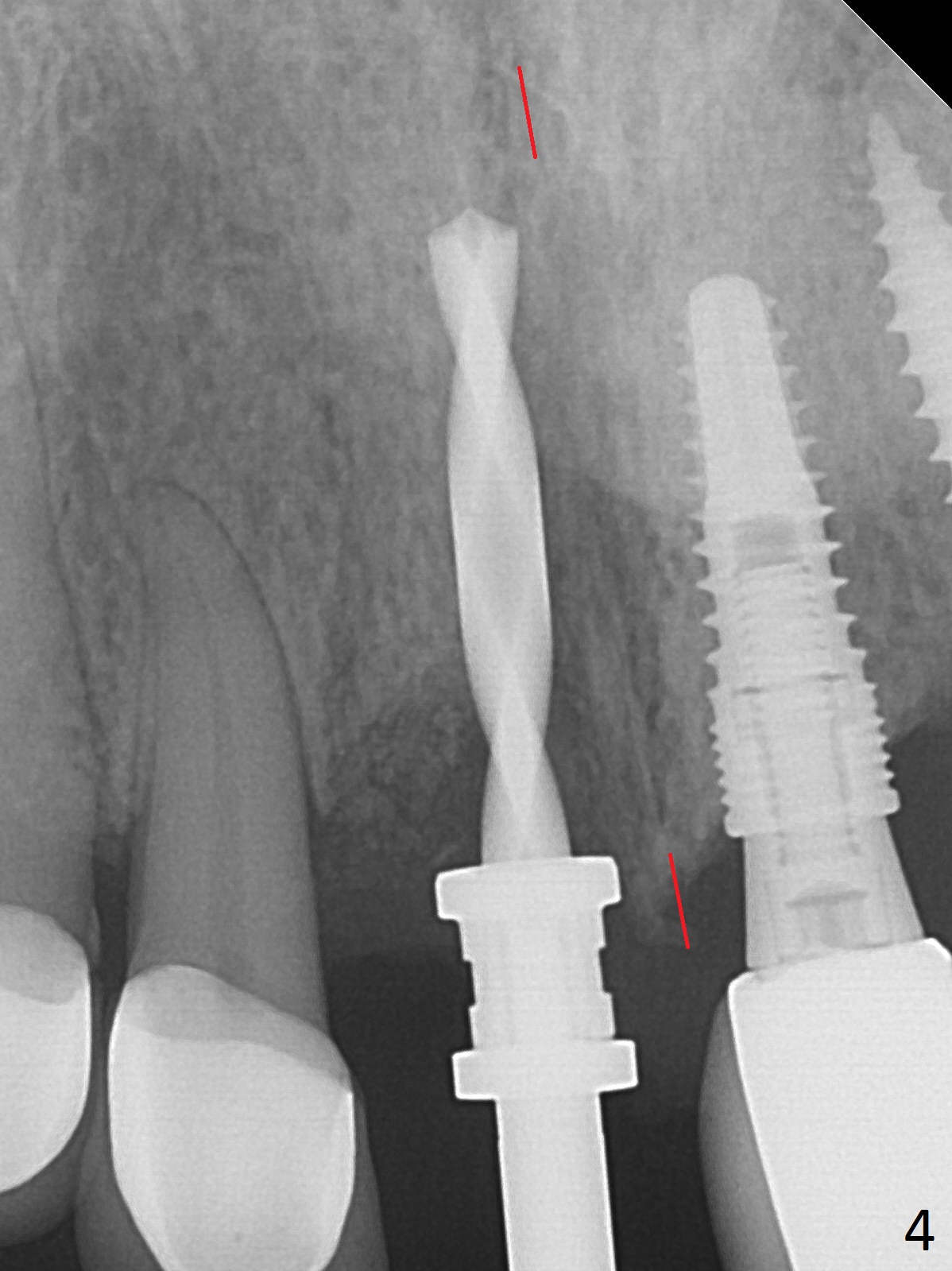
.jpg)
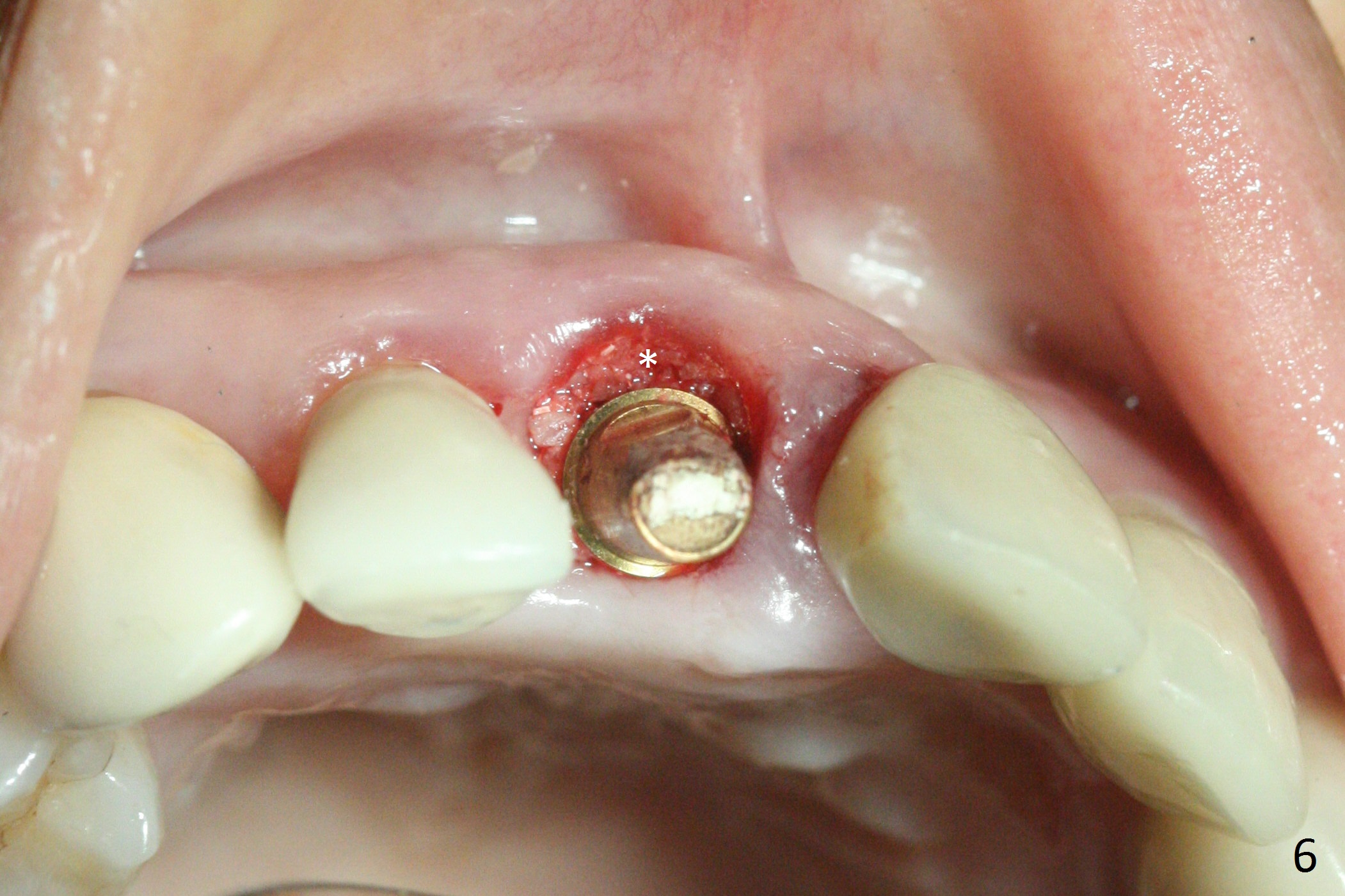
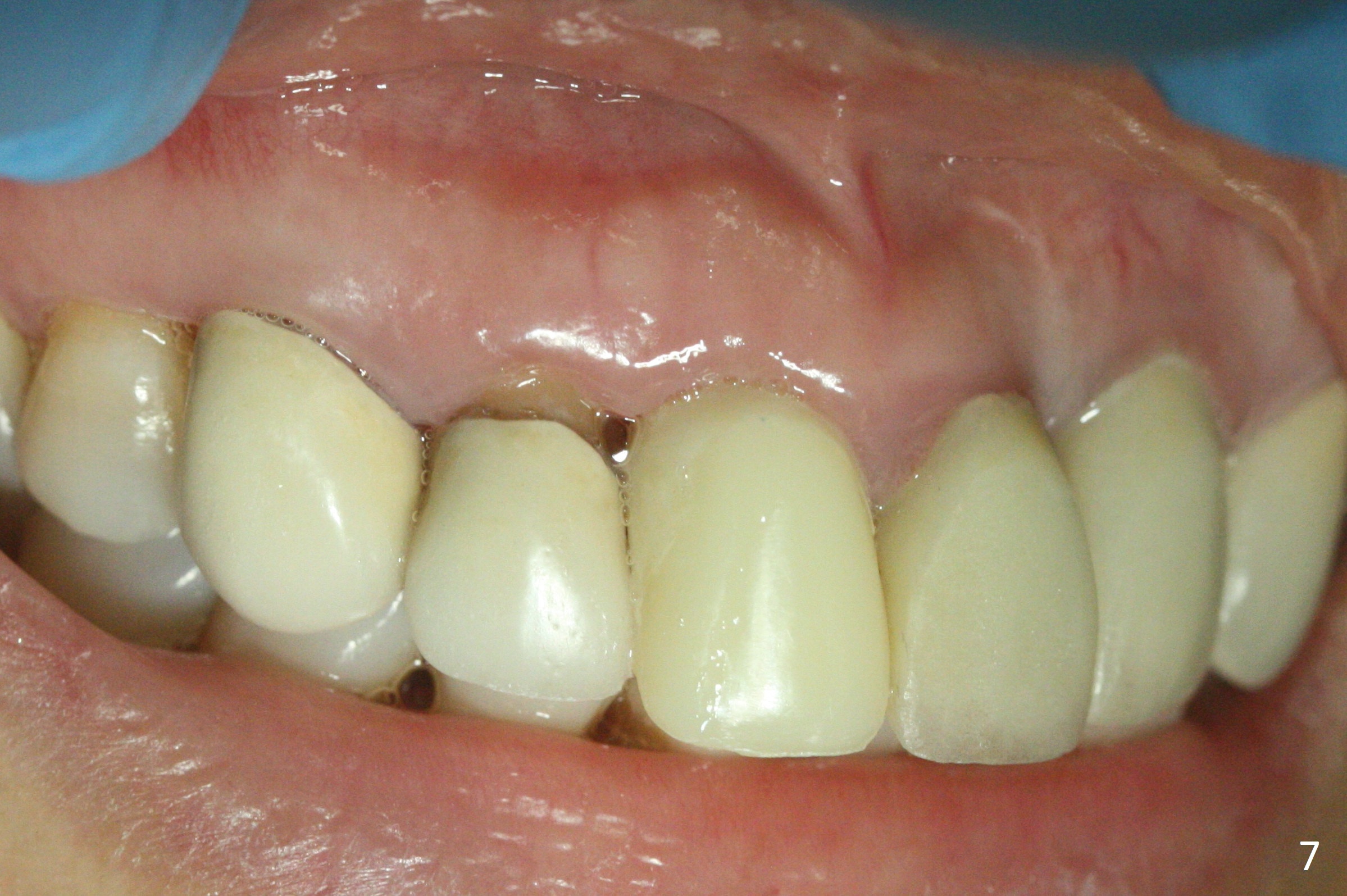
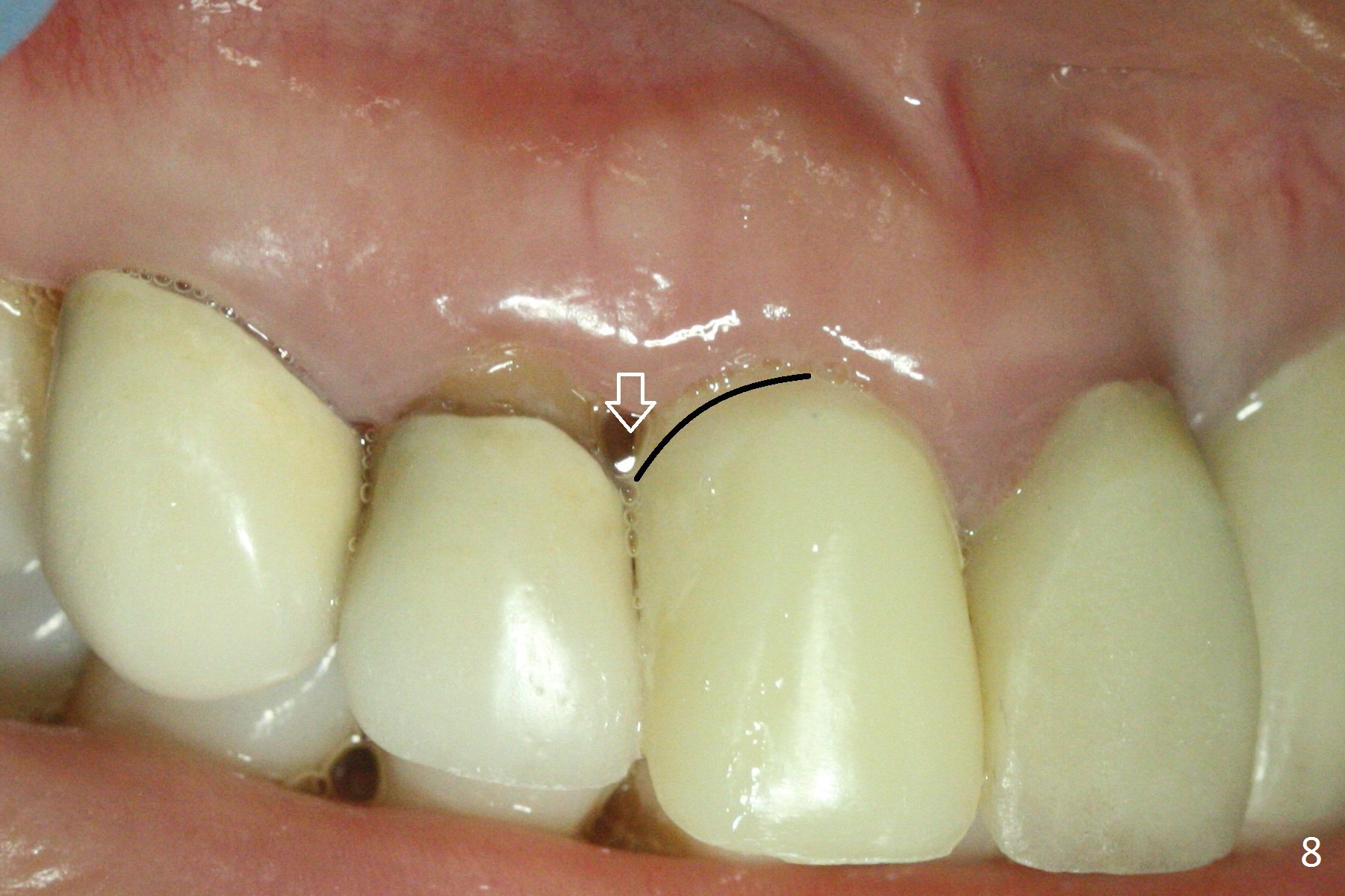
 |
 |
 |
|
 .jpg) |
 |
||
 |
 |
||
Intraligamental Injection for Hemostasis
In spite of gingival recession and mobility I or II, there is minimal gingival inflammation of the tooth #8 post osseous surgery and bone graft. Xylocaine 34 mg with 1:100,000 Epinephrine is injected intraligamentally after infiltration in the labial vestibule. There is minimal hemorrhage post extraction with a piece of gauze saturated with the anesthetic (Fig.1); note the blanched gingiva (B). The hemostatic effect is favorable to start (Fig.2) and correct (Fig.3,4) osteotomy and place a 3.8x12 mm SM implant (Fig.5). To prevent periimplantitis, the implant is placed deeper than its counterpart (compare the level of the plateau of the neighboring implant <); bone graft is placed in the remaining socket space (Fig.5,6 *) following insertion of a 4.8x5.5(3) mm abutment. The hemostasis is maintained in the end of the surgery (Fig.6).
The gingiva is less recessive around the provisional 15 days postop (Fig.7) than preop. After wound healing, the distal margin is going to be trimmed (Fig.8 black curved line, more or less making the buccal surface thinner) so that the papilla may grow downward (arrow).
Return to
Upper Incisor Immediate
Implant, IBS
Xin Wei, DDS, PhD, MS 1st edition 05/26/2017, last revision 02/20/2018